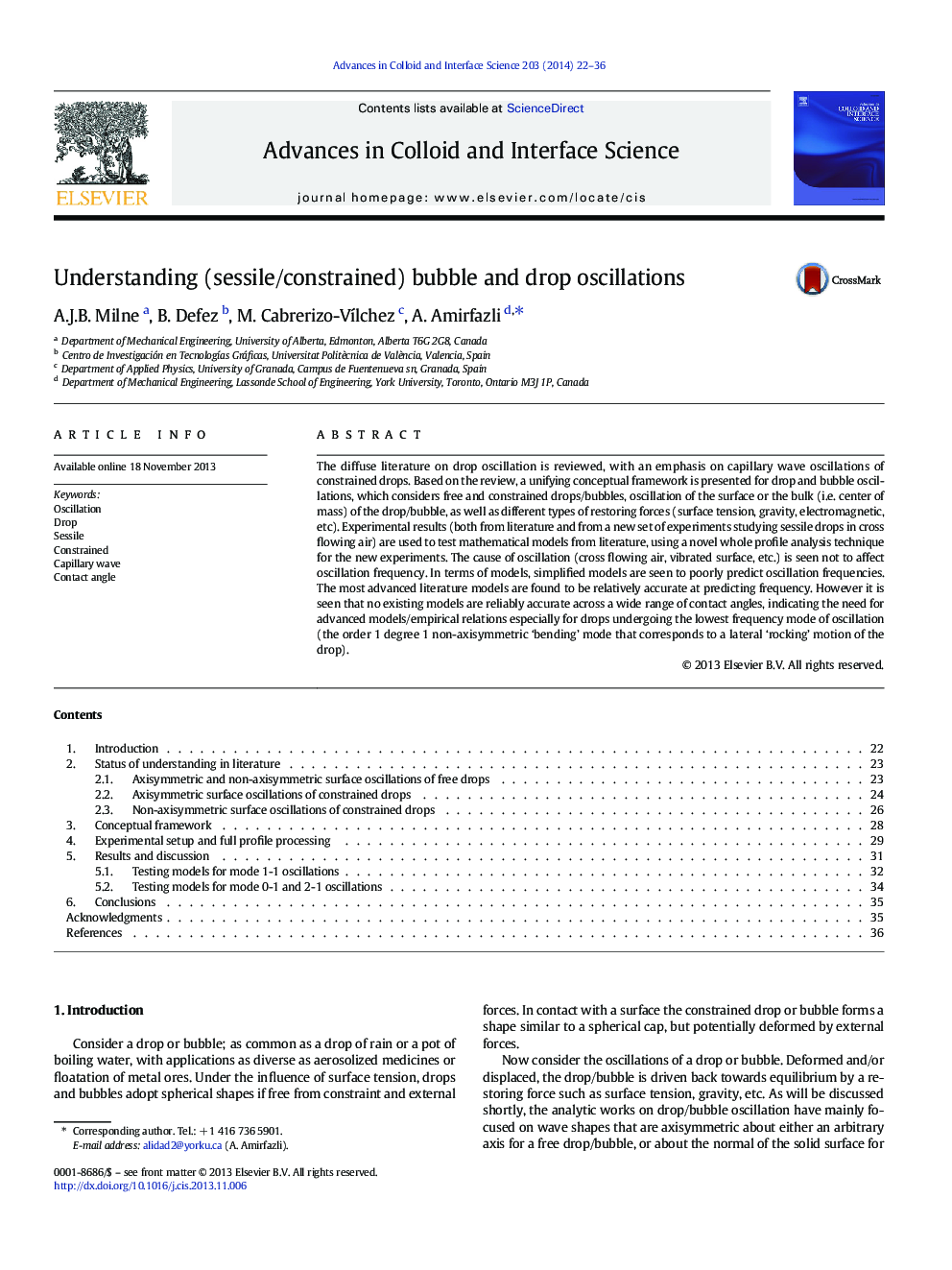| کد مقاله | کد نشریه | سال انتشار | مقاله انگلیسی | نسخه تمام متن |
|---|---|---|---|---|
| 590819 | 1453560 | 2014 | 15 صفحه PDF | دانلود رایگان |
• Literature on constrained drops/bubble oscillation is diffuse, not always (well) used.
• Literature is collected with a categorizing framework for drop/bubbles oscillations.
• Full profile analysis gives bulk/surface oscillation of drops in cross flowing air.
• Mode shape/frequency is similar for cross flowing air/other forcing mechanisms.
• Literature models cannot predict frequency over entire range of contact angles.
The diffuse literature on drop oscillation is reviewed, with an emphasis on capillary wave oscillations of constrained drops. Based on the review, a unifying conceptual framework is presented for drop and bubble oscillations, which considers free and constrained drops/bubbles, oscillation of the surface or the bulk (i.e. center of mass) of the drop/bubble, as well as different types of restoring forces (surface tension, gravity, electromagnetic, etc). Experimental results (both from literature and from a new set of experiments studying sessile drops in cross flowing air) are used to test mathematical models from literature, using a novel whole profile analysis technique for the new experiments. The cause of oscillation (cross flowing air, vibrated surface, etc.) is seen not to affect oscillation frequency. In terms of models, simplified models are seen to poorly predict oscillation frequencies. The most advanced literature models are found to be relatively accurate at predicting frequency. However it is seen that no existing models are reliably accurate across a wide range of contact angles, indicating the need for advanced models/empirical relations especially for drops undergoing the lowest frequency mode of oscillation (the order 1 degree 1 non-axisymmetric ‘bending’ mode that corresponds to a lateral ‘rocking’ motion of the drop).
Figure optionsDownload as PowerPoint slide
Journal: Advances in Colloid and Interface Science - Volume 203, January 2014, Pages 22–36
